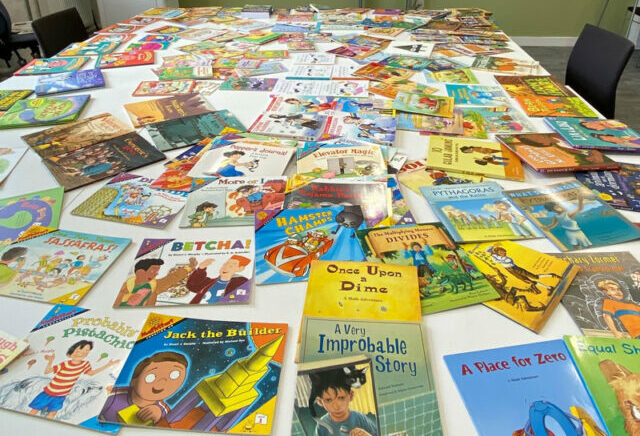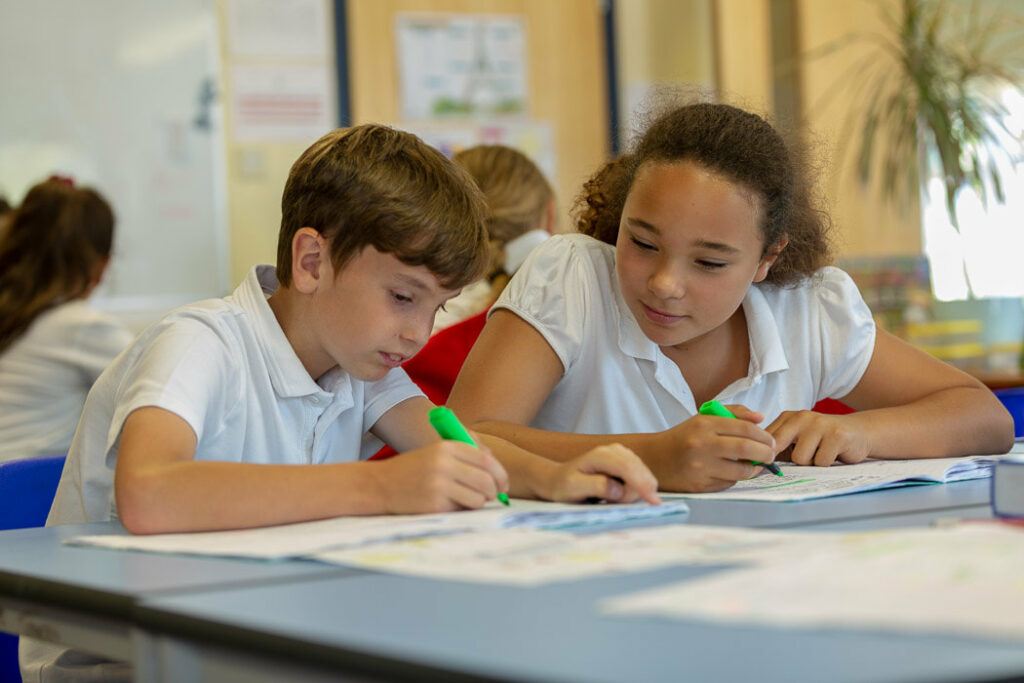This year, National Storytelling Week takes place between Monday 30 January and Sunday 5 February. To celebrate this special event at homes and schools throughout the country, why not get children to tell mathematical stories? Better still, why not get them to create their own mathematical story picture books!

Humanising maths
The idea of combining storytelling/literacy and mathematics learning may seem odd at first – owing to how curricular subjects are often treated as discrete units of knowledge. However, it matters to remember that mathematical knowledge does not exist abstractly to be learned and memorised for exams. Mathematical knowledge exists to help us solve real-world problems. By ‘humanising’ mathematics through embedding mathematics in meaningful everyday contexts, children learn to see just how important and relatable mathematics actually is. This is where storytelling comes in.
Mathematical stories are essentially fictional narratives with characters who use their mathematical knowledge and skills to help solve a problem or a mission. There are a wealth of mathematical stories out there. According to MathsThroughStories.org – the world’s largest database of recommendations for mathematical stories (my pet project – more on that later) – there are over 500 mathematical stories that are written by professional authors and teachers, which can be used to teach more than 40 mathematical concepts across the age range.
While the idea of teachers and parents reading these mathematical stories to their students/children is not new, I have spent nearly the past ten years encouraging key educational stakeholders to see that children can be empowered to become mathematical storytellers and be encouraged to create their own mathematical story picture books.
Why the obsession with the picture book format?
When children create their own mathematical story picture books, not only do they have to actively think about a meaningful context/storyline for the mathematics in their story (contextualisation), they also have to actively think about how to represent the mathematics in their story visually as part of their page illustrations (visualisation).
These two components – contextualisation and visualisation – are key to helping young mathematics learners develop their conceptual understanding of mathematical concepts. In fact, the findings of my latest research involving data collected from over 1,000 children in the South East of England provides empirical evidence to support this idea (Trakulphadetkrai, under review).
An international mathematical story competition for school children
To help popularise this new way of teaching mathematics globally, I launched the Young Mathematical Story Author (YMSA) competition in 2019. YMSA is the world’s first annual international competition set up to encourage young mathematics learners (8–15 years old) from around the world to embed their mathematics learning in a meaningful and engaging context through creating their own mathematical story picture books (around 10 pages only). Since its inception, I have received YMSA entries from nearly 2,000 students from over 160 schools across 18 countries.

One of the children from India who took part in the YMSA competition commented that: “I thank YMSA for being such an amazing international platform on which students around the world can express their love for maths and further expand their own maths knowledge while explaining maths concepts to others in a fun manner. Everyone should take part in the YMSA competition!”
In addition to myself, the judging panel includes two of the world’s most prolific and best-selling mathematical story authors, Stuart J. Murphy and Cindy Neuschwander. There are two entry categories: 8–11 and 12–15 years old, and the awards for these two categories are named The Stuart J. Murphy Award and The Cindy Neuschwander Award respectively.
The winner in each of these two categories receives a cash prize award of £100, and their school also receives £100. The Stuart J. Murphy Award and The Cindy Neuschwander Award are funded by HarperCollins and Charlesbridge respectively.
So if you are looking for a fun and exciting way to help your students/children celebrate National Storytelling Week with a mathematical twist, why not encourage them to take part in this year’s YMSA competition? The submission deadline is Friday 31 March 2023 (17:00 UK time).
Natthapoj Vincent Trakulphadetkrai is an Associate Professor of Mathematics Education at the University of Reading’s Institute of Education and the founder of the non-profit research-based MathsThroughStories.org. The website offers free resources for teachers and parents globally so they become confident in using storytelling to support young mathematics learners.
is an Associate Professor of Mathematics Education at the University of Reading’s Institute of Education and the founder of the non-profit research-based MathsThroughStories.org. The website offers free resources for teachers and parents globally so they become confident in using storytelling to support young mathematics learners.
He tweets at @NatthapojVinceT and @MathsStories.
